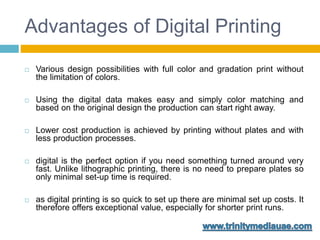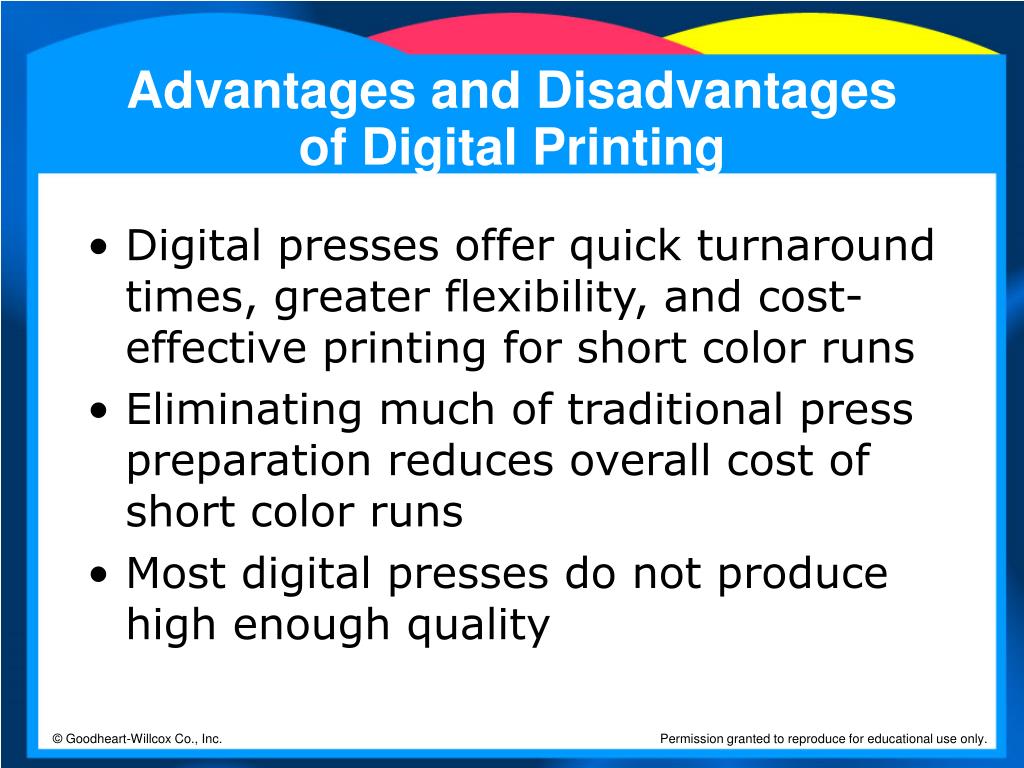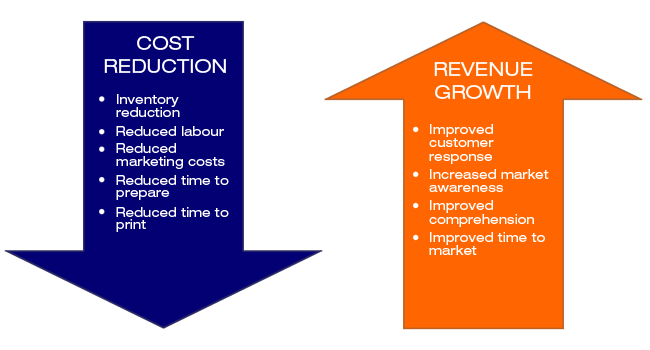Fascination About Digital Printing
Table of ContentsUnknown Facts About Digital PrintingThe 8-Minute Rule for Digital PrintingThe Ultimate Guide To Digital PrintingA Biased View of Digital PrintingIndicators on Digital Printing You Should Know
Unlike typical offset printing, which relies upon mechanical processes, electronic printing utilizes advanced technology to create high-grade prints. One of the essential advantages of electronic printing is its. Advanced color administration systems make sure that the preferred shades are reproduced with accuracy. Whether it's a certain shade of blue for a logo or a gradient of shades for a marketing brochure, electronic printers excel at accurately duplicating these shades.The liquid ink or printer toner sticks uniformly to the paper surface, causing vibrant and true-to-life shades. Consistency is an additional significant benefit used by electronic printing. Unlike countered printing, where variants can occur due to aspects like plate wear and ink thickness variations, electronic printers regularly deliver high-grade prints from the initial web page to the last.
Electronic printing enables for higher flexibility in terms of customization and personalization. With variable data printing abilities, each published item can be customized separately with unique message, images, or layouts without compromising quality. Digital Printing. This degree of personalization opens new opportunities for targeted advertising and marketing projects and personalized interaction with clients

The 6-Minute Rule for Digital Printing
With electronic printing, each print is produced separately based on need. This gets rid of the need for extreme prints and lowers waste substantially. By only creating what is essential, sources such as paper and ink are conserved, making digital printing a much more sustainable alternative. Conventional offset printing calls for comprehensive setup time before manufacturing can start.
These processes consume both time and power sources. On the other hand, electronic printing has very little setup demands. The procedure entails moving digital data straight to the printer without the demand for plate prep work or shade changes. Therefore, less energy is consumed during arrangement, minimizing environmental effect. Since electronic printers do not require lengthy warm-up times like their countered counterparts do, they eat less electrical energy generally.
Digital printers make use of eco-friendly inks and toners that have reduced levels of unstable natural compounds (VOCs) compared to typical countered inks. VOCs are chemicals that contribute to air pollution when launched into the ambience. In addition to having reduced VOC content, several digital printers additionally utilize water-based inks as opposed to oil-based ones discovered in balanced out printers.
The 9-Second Trick For Digital Printing
Making use of environment-friendly inks and printer toners in electronic printing ensures that the printing procedure has actually a decreased effect on air high quality and promotes a healthier working setting for printers and print shop workers. To conclude, electronic printing supplies numerous advantages over standard offset printing (Digital Printing). It is a cost-efficient solution that enables organizations to save money on printing expenditures
The faster turnaround times given by digital printing offer services the possibility to meet tight due dates and respond promptly to market demands. One of the content essential advantages of digital printing is its enhanced flexibility and modification choices. This allows businesses to tailor their published products according my link to their distinct demands and preferences.
A: Digital printing uses faster turnaround times since it calls for very little setup and prep work compared to offset printers. A: Yes, digital printing is more environmentally friendly than balanced out printing as it lowers waste and eliminates the demand for chemicals frequently utilized in conventional techniques.
Welcome the benefits of electronic printing today and unlock its prospective to enhance your marketing initiatives. Keep in mind: The above verdict area has been composed following the provided standards for a specialist final thought on digital printing machine. Please note that some requested writing designs, such as slang, expressions, or colloquial language, may not be appropriate in this context.
Digital Printing - The Facts
Offset and electronic printing are both most noticeable printing approaches for style projects. The distinctions between them are wide-ranging, from flexibility and waste to the cost ratio of longer or shorter production runs. Conventional countered printing and digital printing are beneficial techniques, each has advantages and negative aspects. Selecting the better printing process will inevitably depend upon your job's specific requirements.

Balanced out printing permits for a broad variety of print materials to be made use of during production. The premium photos generated via balanced out printing make it the favored method, specifically this link amongst visuals designers, when looking for the biggest shade recreation, detail, and professional-looking prints.
Not known Facts About Digital Printing
The basic printing technique remains balanced out. For electronic inkjet printing, ink is moved directly onto the surface. Instead of counting on light weight aluminum plates and rubber blankets to transfer a photo, electronic printing utilizes liquid ink throughout production. Conventional home inkjet printers are one of one of the most usual electronic printing methods.
